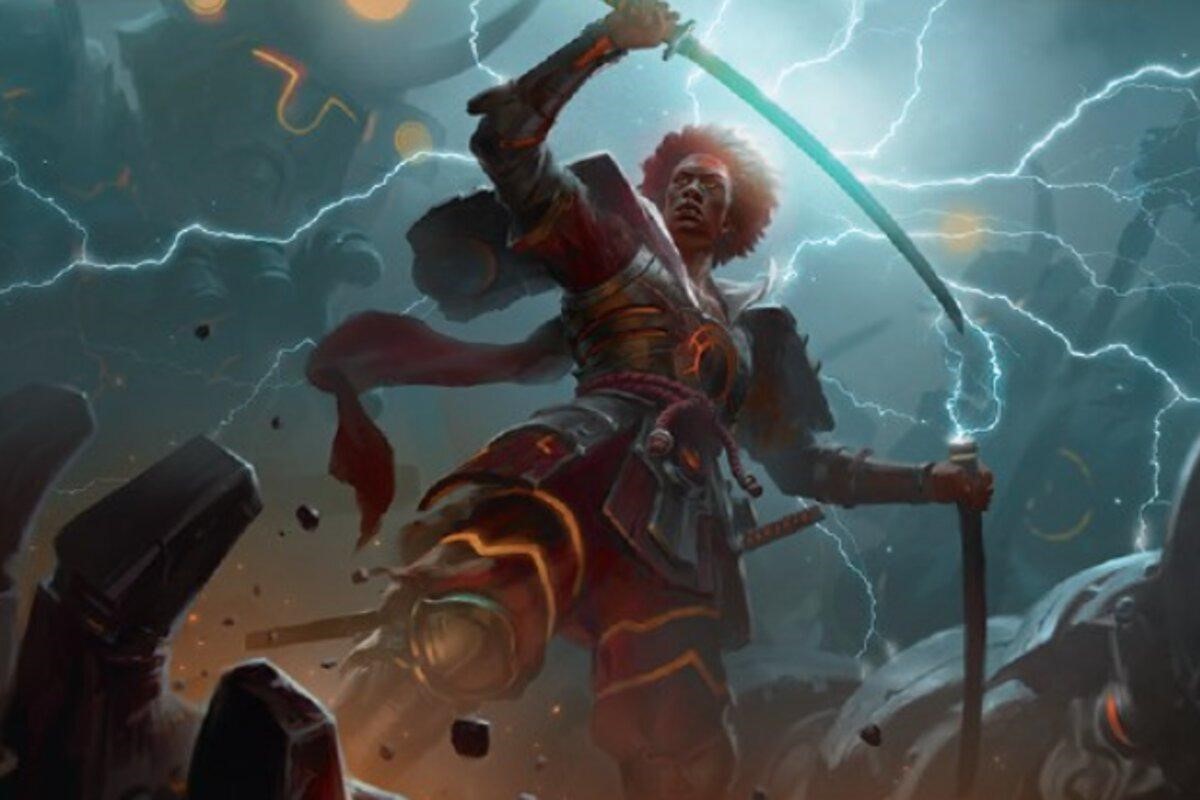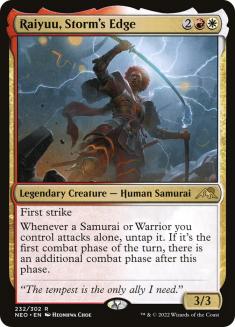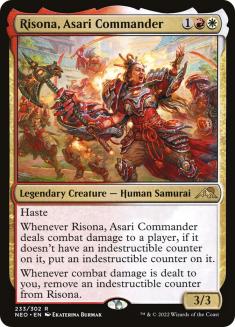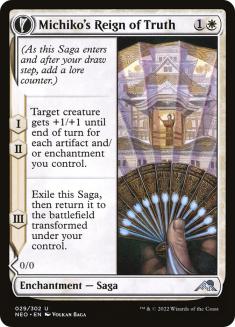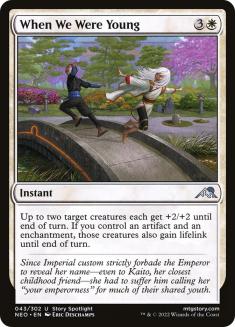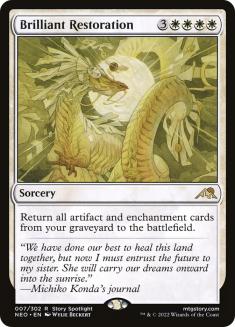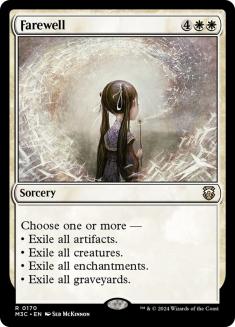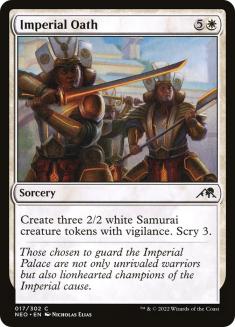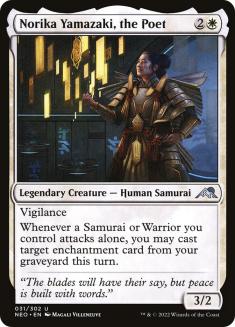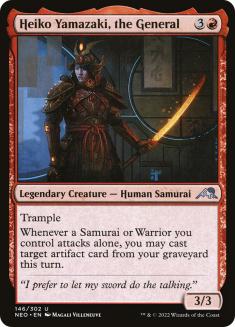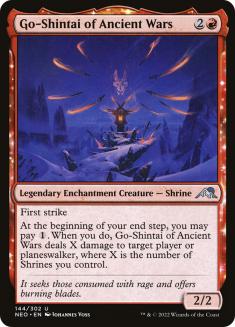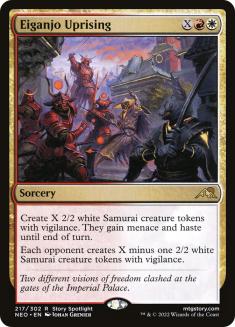I’m not a religious person, but drafting Boros in Kamigawa: Neon Dynasty (NEO) Draft has made me reflect on a quote often attributed to John F. Kennedy.
Do not pray for easy lives. Pray to be stronger men. Do not pray for tasks equal to your powers. Pray for powers equal to your tasks. Then the doing of your work shall be no miracle, but you shall be the miracle.
Rev. Phillip Brooks
Every format has an archetype that we’d love to shoot into space with Elon Musk. However, the fact remains that if you’re not prepared to draft Boros—the worst color pair according to 17Lands in Premier, Traditional, and Quick Draft—your powers are not equal to your task. If you saw a Pack 1, Pick 6 Raiyuu, Storm’s Edge, are you shipping it or stepping up?
How Did I Get Here?
Outside Raiyuu, no Boros rares are strong enough, in a vacuum, to pull you into this archetype from Pick 1. They’re the cheesy bread you add to a Grubhub order to make your minimum delivery fee; you want it, but it’s never why you made the original decision to order from that restaurant. Risona, Asari Commander is the ultimate “I guess a can of Diet Coke?”
First, you can be mono-colored in either red or white through most of Pack 1 and see a late Experimental Synthesizer, Imperial Oath, or even Asari Captain and speculate on it. These decks tend to bias towards Boros and open or are passed a strong rare in the spec color. I call this the “always the sidecar, never the motorcycle” approach. Your plan should be to avoid going all-in on the strategy early. After all, there’s no reason to eschew a passable Rakdos or Orzhov build if you can be in that lane.
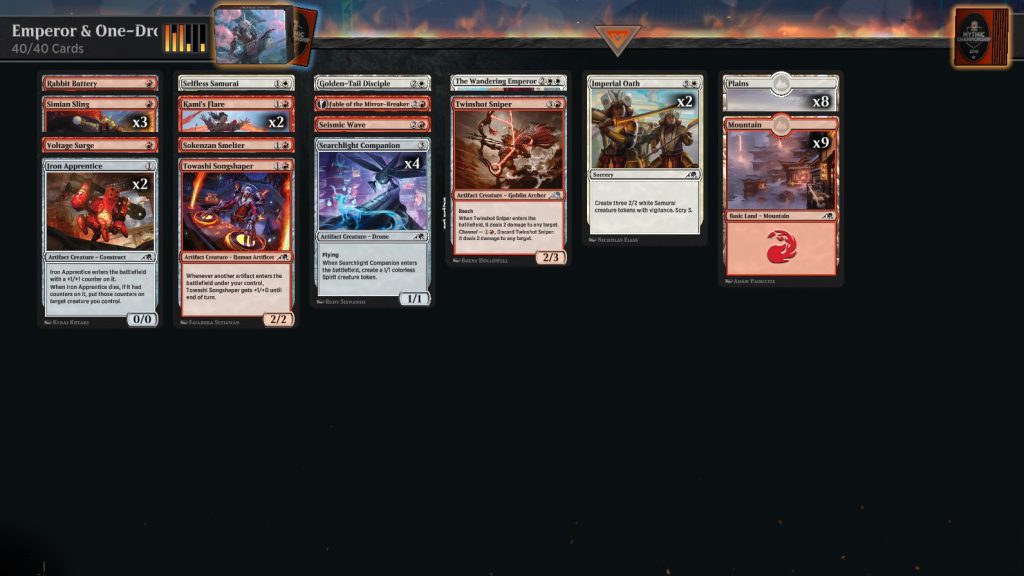
Second, you can draft Fable of the Mirror-Breaker or The Wandering Emperor and do whatever you like.
Looking at a draft from left to right and seeing two copies of Regent’s Authority tells me they must have one or both cards mentioned above. Ao, the Dawn Sky is the honorable mention here, as the first option on its death trigger can hit three permanents without a lot of effort on your part. Regardless of which card you choose, you can wind up in Boros and feel confident you’ll have 40 playables.
Archetype 1: Artifacts Matter
Here, we’re playing a predominantly red deck that craves one- through three-drops and can run as few as fifteen lands. Cards like Sokenzan Smelter and Towashi Songshaper are at their best when you have eight to twelve artifacts in your deck, but we’re still trying to play as many copies of Sagas like Kumano Faces Kakkazan as we can draft. Receiving modified bonuses comes naturally with our reconfigure creatures, although payoffs are not a priority for us.
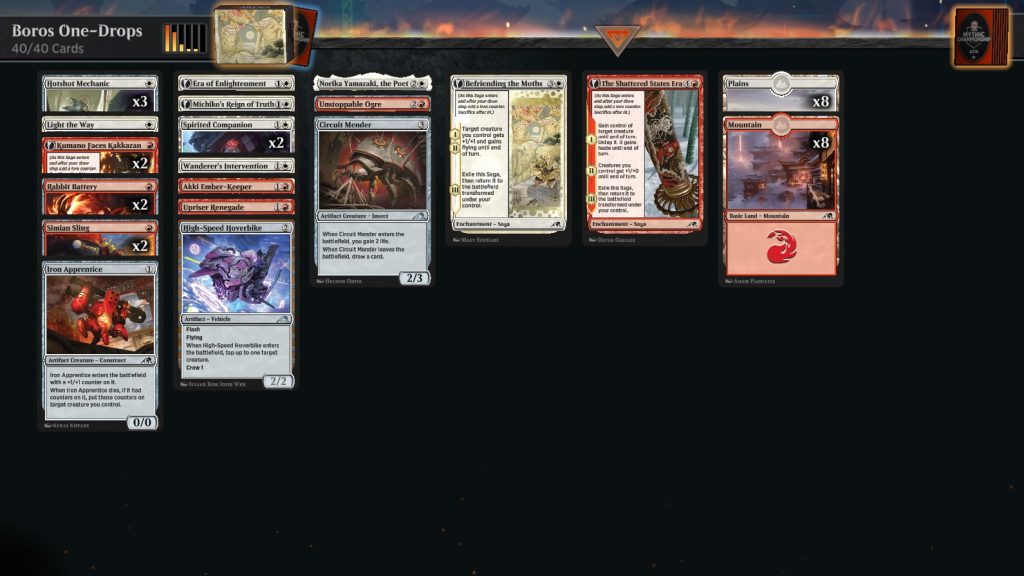
With Orzhov getting the “enchantments and artifacts” cards, you’d think the white half fractures into supporting red’s side of Izzet’s “artifacts-matter” cards in exciting ways. Sadly, it does not. Most importantly, you have access to Michiko’s Reign of Truth, a fundamental way to give early plays renewed relevance and close out games with evasive creatures. A 5/5 Searchlight Companion isn’t something your opponent can ignore. When We Were Young, on the other hand, is entirely ignorable.
Instead, white’s primary purpose is to help us eliminate high-value targets from our opponent’s side of the battlefield, as Kami Flare and Voltage Surge can only do so much. Sure, blocking is notoriously bad in NEO, but we must have an answer to the back of a Boseiju Reaches Skyward: Banishing Slash, Touch the Spirit Realm, and The Fall of Lord Konda, listed in order of importance, with Repel the Vile trailing a fair distance further back. Excepting Lord Konda’s Notes App Apology Gone Awry, these are all versatile cards that let red handle the format-defining Sagas. Otherwise, white tends to be controlling, so we get value taking more aggressive picks for free late in the pack.
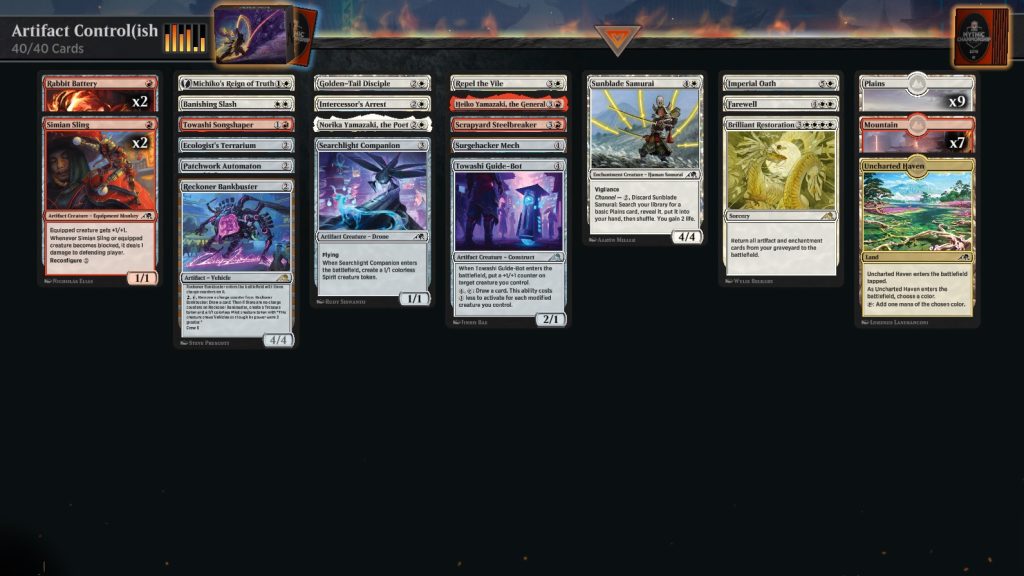
The Slower Side
In slower versions of this deck, white can also contribute finishers. Brilliant Restoration and Farewell offer powerful effects that entirely change the battlefield. Resto is devastating with so many hasty creatures and enters-the-battlefield effects in our deck. On the flip side, I’ve put Farewell to use offensively several times by naming enchantments and clearing out Sagas. Finally, Imperial Oath can go in any speed of deck, but there’s an actual cost to running seventeen lands. This deck is not well-suited to deal with flooding, so I’ve found myself less interested in this style of build.
For your fast finishers, Ironhoof Boar remains the gold standard and awkward hit off Experimental Synthesizer. It makes a cute Lava Axe impression late in the game, but don’t be scared to channel it earlier to keep your opponent off-balance. Ambitious Assault is a card I’ve come up on when I’m playing enough Searchlight Companions and small creatures like Simian Sling and Mothrider Patrol. It’s not difficult to have it contribute eight or more power to an attack.
One-Drop Cheat Sheet: Eater of Virtue, Kumano Faces Kakkazan, Rabbit Battery, Voltage Surge, Experimental Synthesizer, Ninja’s Kunai, Iron Apprentice, Simian Sling, Reinforced Ronin, Hotshot Mechanic, Mothrider Patrol, Lucky Offering, Light the Way, Regent’s Authority
Two-Drops You’re Undervaluing: Patchwork Automaton, Michiko’s Reign of Truth, High-Speed Hoverbike
Two-Drops You’re Overvaluing: Eiganjo Exemplar, Wanderer’s Intervention, Tempered in Solitude, Dragonspark Reactor
Archetype 2: Samurai / Warrior Quasi-Exalted
Our signpost archetype, or what the design team wants us to do based on the uncommon Asari Captain, rewards us for attacking… alone? I know. I hate it, too. Boros typically wants to go as wide as possible and risk it for the biscuit. In NEO, the payoffs can feel either meager or like the perfect storm. It’s part of what makes the deck so maddening.
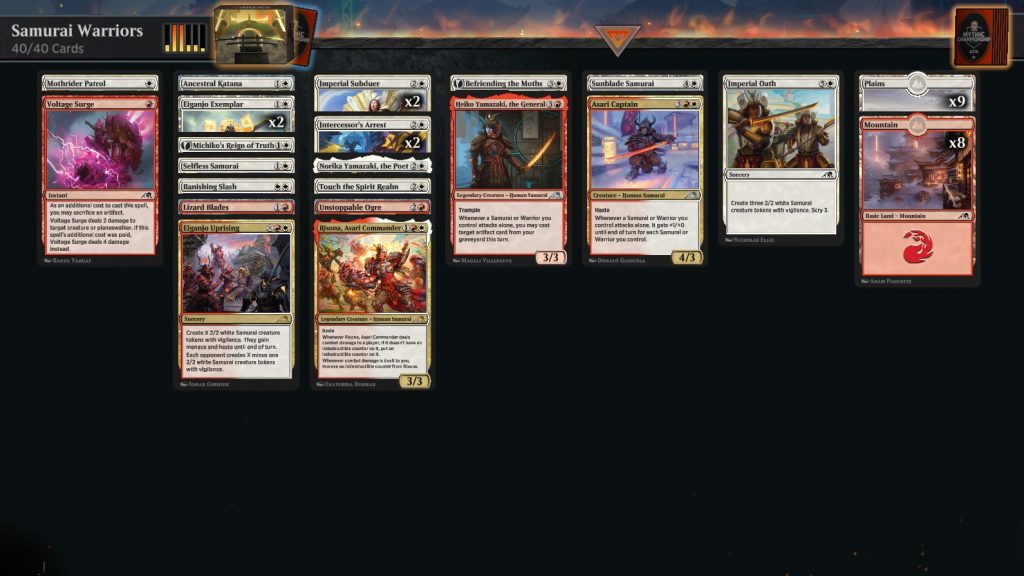
I usually find myself in Samurais because I took fairly deck-agnostic picks early—any red or white removal and a generic rare—and see cards like Norika Yamazaki, the Poet or Heiko Yamazaki, the General available later than expected. Then you snag a late Imperial Subduer or two, and it’s off to the races. And by races, I mean the kind where they throw a bunch of rubber ducks in a river and you hope yours crosses the finish line first, as the deck can struggle for velocity.
Quality Over Quantity
One of the most significant errors I see is people checking for a creature type, seeing Warrior or Samurai, and jamming it in the deck. Broadly, you don’t care about getting a critical mass for volume’s sake. Since you can only attack with one, it’s what they get you that matters. Subduer, Selfless Samurai, Eiganjo Exemplar, Asari Captain, and the Yamazakis are our real payoffs at uncommon and below. If we have two or more copies of Imperial Oath, I don’t mind playing a single Peerless Samurai, but I’m not wild about it. Akki Ronin and Ancestral Katana usually feel worse than they should for me, but I can excuse a copy of the latter.
Oath is the real reason to be in this deck, as tossing a single 2/2 creature with vigilance into the water and watching it grow is the best possible version of those foam dinosaurs we had as kids. This painfully turns into an attrition game as they trade something, thus hurting your overall Sam/War count, until you can finally attack with all and win.
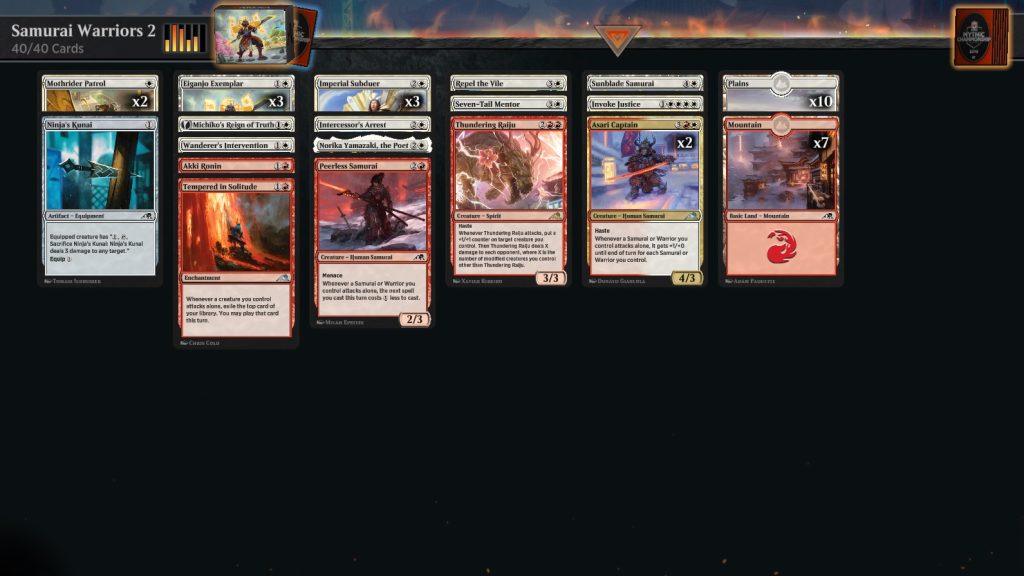
Red’s Role
Red serves the inverse purpose compared to our first archetype. It provides little in terms of payoffs, but packs cheap removal and generically good cards like Twinshot Sniper or Thundering Raiju. In terms of finishers, pinging away with Go-Shintai of Ancient Wars isn’t awful for a deck that can hurt for a bit of reach. Since this version goes deeper on the land count, Eiganjo Uprising has developed into a pet favorite of mine, dropping six tokens onto the battlefield and going to town.
Relevant Creature Type Power Rankings: Raiyuu, Storm’s Edge; Goro-Goro, Disciple of Ryusei; Selfless Samurai; Asari Captain; Eiganjo Exemplar; Risona, Asari Commander; Imperial Subduer; Norika Yamazaki, the Poet; Heiko Yamazaki, the General; Mothrider Patrol; Sunblade Samurai; Sky-Blessed Samurai; Seven-Tail Mentor; Peerless Samurai; Reinforced Ronin; Isshin, Two Heavens as One
Splashing Black? Buyer Beware
Speaking of Isshin, my look at the first month of draft data showed he’s one of the worst splashes you can make in this deck. When I researched trophy decks (either 7-X in Best-of-One drafts or 3-0 in Best-of-Three drafts), I couldn’t find a single splash in Boros that wasn’t black. That’s 1,000 winning decks with zero splashes for Tameshi, Reality Architect or Hinata, Dawn-Crowned. A remarkable stat and one worth paying attention to.
Most frequently, these non-Isshin splashes were March of Wretched Sorrow; Hidetsugu, Devouring Chaos; and Life of Toshiro Umezawa. I can tolerate these in our second archetype, where our gameplan is notably slower. Including Bloodfell Caves or Uncharted Haven in faster builds or artifact-driven strategies risks losing valuable tempo, so I’m passing there. As always, your mileage may vary.
Final Thoughts
As the format matures, I find myself more inclined to step on the gas and beat the durdly decks that rely on Sagas before they can fully set up and gain control. Leveraging the white cards control decks aren’t particularly interested in can pay real dividends if you’re the only one at the table taking them. Lately, it feels like that’s the case. Pray for my opponents.

